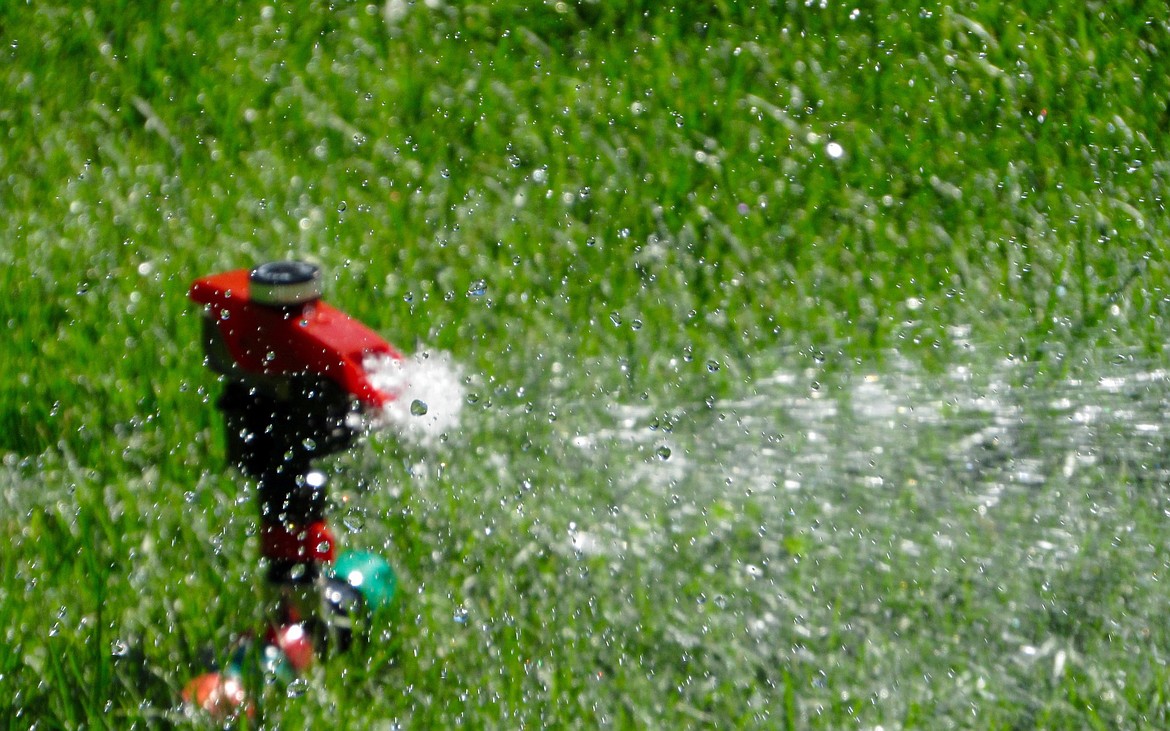Tips for keeping lawns green
Lawns in the Columbia Basin can stay green despite the hot weather.
Whether we think about them or not, lawns depend on soil type, weather, and timing, length of watering and irrigation system output.
Most of our Grant County soils are sandy loams and silt loams and do not need to be watered as often as soils that consist entirely of sand (though some of us have that, too).
The water holding capacities of sandy loams and silt loams are higher than sands. Check the Soil Survey of Grant County, Washington, available through the USDA Natural Resources Conservation Service or the public library, go to http://websoilsurvey.nrcs.usda.gov/app/HomePage.htm, or Soil Web http://casoilresource.lawr.ucdavis.edu/soilweb-apps/ to find out what the soils are on your property.
Maintaining the quality of the lawn depends on a number of soil and grass characteristics. Knowing the turfgrass type, rooting depth, amount of thatch, structure and texture of the soil, slope, exposure and tracking the weather can help determine how much and how often to water.
Consider the following tips.
· Water on alternate days or every third day, unless it is hot for sustained periods. This is better for the lawn than watering every day for short periods, which can create unhealthy lawn conditions and reduce drought tolerance effectiveness.
Light sprinkling encourages root development near the surface, which means lawns have to be watered more often, and also favors the development of more weeds and diseases.
A shallow root system may also be due to compacted soil, thick thatch, past watering practices or something else.
Watering less often for longer periods still keeps lawns green, conditions the roots, and can help keep fertilizer and pesticides from leaching. This method encourages deeper root growth, maximizes the lawn quality and watering efficiency.
· Lawns with deep root systems are able to use a higher volume of soil for water and nutrients and are much less subject to drought stress or other stressors.
· If there is a choice, early morning (4-8 a.m.) is the best time to water, because wind and evaporation losses are typically low and application efficiency is the greatest. Midday watering is not very efficient. Early evening or night watering is not encouraged, because it leaves the grass blades and thatch wet going into the evening and creates a greater potential for diseases.
· Dividing the yard into areas that use a lot of water vs. less water can be effective.
· Utilizing a designed irrigation system with separate circuits for lawns, trees and planting beds may work better in watering according to plant needs. This is because the lawn has relatively shallow roots while trees and shrubs have much deeper roots.
· Reducing the amount of lawn by planting more perennial ground covers, native plants and drought-tolerant plants can be a way to minimize water use, because turf generally requires more frequent watering than established trees, shrubs or groundcovers.
· Following good soil management practices like regularly aerating, dethatching, soil testing and applying fertilizer at recommended intervals, and mowing can help improve a lawn’s drought tolerance. Follow pesticide and fertilizer labels.
· Adjust sprinklers to minimize runoff.
· Try not to water lawn and landscape trees at the same time. Trees and shrubs require a different method of watering than lawns.
For anyone who wants to know a little more about watering, try this method to figure out how often to water. Start by measuring how much water is put on the lawn in an hour. Set straight-sided tin cans like (a few) soup or tuna cans or rain gauges at varying distances on the sprinklers’ path. After running the sprinklers for 15 minutes, measure the depth of water collected in inches. Calculate the average, total these amounts and divide by the number of cans used. As a check, repeat for each station.
When you finish, you should know the average amount of water delivered in 15 minutes. Multiply this average by 4 to give you the amount of water that is applied in 1 hour.
Now, by knowing how much water is applied within a set amount of time, you can figure out how to efficiently replace water being lost from the soil.
You do this by monitoring the atmospheric demand on water loss. (Pan) evaporation rates are monitored and usually published by the U.S. Weather Bureau. The idea is to replace the water lost through evaporation from the soil and from transpiration through the grass. To determine how often to water, start with a lawn that is watered well enough so the soil is moist to a depth of 8 to 12 inches. Yes, you will have to check the moisture of the soil.
Monitor the evaporation rate each day. When the accumulative amount of pan evaporation reaches one inch, it’s time to apply 3/4 to 1 inch of irrigation water to replace the water lost from the lawn.
You’ll know how long to run your system based on the little test and math exercises you did earlier. However, since the amount of stored water in the soil depends on the depth, structure and soil texture, frequency of watering will depend on how sandy or clayey it is. A sandy soil won’t store as much or as long as a clayey soil.
For gardening questions contact the WSU Grant-Adams Master Gardeners at the WSU Grant County Extension office at 754-2011, ext. 4313, or email ga.mgvolunteers@wsu.edu. Online reference services are available at https://extension.wsu.edu/grant. Sealed samples may be brought for identification to the WSU Extension Office, 1525 E. Wheeler Road, Moses Lake, Monday-Thursday, 8 a.m. to 5 p.m. by appointment only.



